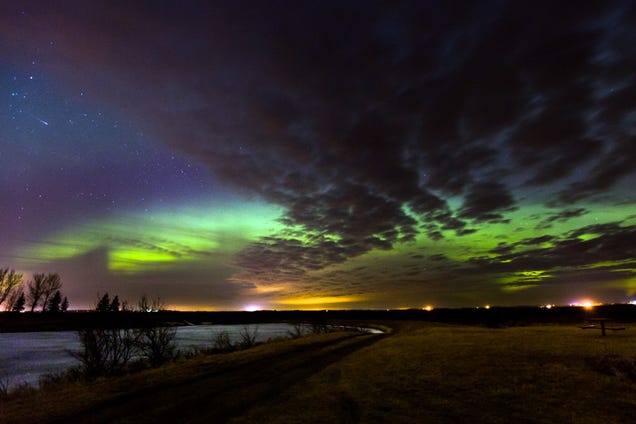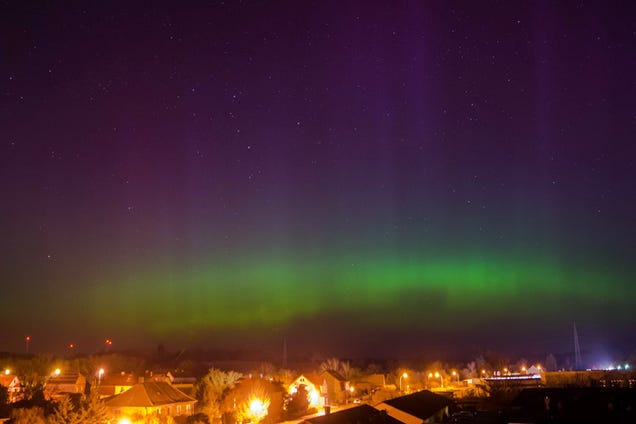
The aurora borealis that took place on St. Patrick's day was spectacular, but aside from being the strongest geomagnetic storm in a decade, there's another reason it was special. It was the first time that thousands of citizen scientists tweeted about the aurora to help NASA construct a detailed global map of the event.
"Aurorasaurus" is a project launched this year by NASA, and it's one of the very first citizen science efforts focused on the northern lights. During the St. Patrick's day storm, over 35,000 people across the world reported aurora sightings via Twitter, the project's website, and iOS and Android apps. The project assembled tweets and reports, placed them on a map, and used the information to share over 361 notifications alerting citizens when the aurora might be visible in their region.
Here's a timelapse showing how the number of reported sightings changed throughout the day on March 17th as auroral activity peaked and diminished:
The image above and the two below were submitted by citizen scientists through Aurorasaurus. The project is ongoing—NASA hopes to continue collecting information through its new platform as "ground truth" for improving auroral models.


So even if you didn't get to see this particular storm, hop on over to Aurorasaurus, and with a little luck maybe you'll catch the next one. [NASA Earth Observatory]
Images via NASA Earth Observatory
Contact the author at maddie.stone@gizmodo.com or follow her on Twitter.
from ffffff http://gizmodo.com/citizen-scientists-are-helping-nasa-map-the-aurora-like-1694360451
via IFTTT







0 comentarios:
Publicar un comentario